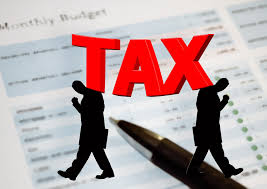How to Do Bookkeeping for a Small Business?
Analyzing Financial Transactions
The accounting process starts with analyzing financial transactions and entering the business entity into the accounting system. For example, loans taken for personal reasons does not include in the business documents.
The first step of the accounting process involves the preparation of source documents. A source or business document serves as the foundation for recording a transaction.
Journal Entries
Business transactions are recorded in a journal (also known as Books of Original Entry) in chronological order using the double-entry bookkeeping system. The journal entries include two accounts – debit and credit.
To simplify this process, accountants use a particular journal to record recurring transactions such as purchases, sales, cash receipts, etc. These transactions cannot include in the special journals registered in the general journal.
Ledger
The general ledger is a collection of accounts that display the changes made to each statement based on past transactions and the current balances in each performance. It is also known as the Books of Final Entry.
How to make a ledger account?
The ledger is the official record of a company’s accounts, and sometimes we refer to the general ledger, purchase ledger, sales ledger, and cashbook. A catalog provides all accounting transaction entries, giving the balance for a specified period. At the end of the period, catalogs serve as an authoritative source of data building for financial statements of a period. Therefore, accounting means a master record of all the company’s financial affairs.
A ledger account contains a record of business transactions. A separate file within the general ledger assigns a specific asset, liability, equity item, revenue, or expense type.
Examples of ledger accounts are:
Cash
Accounts receivable
Accounts payable
Accrued expenses
Debt
Salaries & wages
Office expenses
Depreciation
Office Administration
Cost of goods sold
Revenue
Information is stored in a ledger account with the ending and starting balances for a period and adjusted with debits and credits. Identify Individual transactions within a ledger account with a transaction number or other representation to research why they entered a deal into a ledger account. Transactions caused by regular business activity, such as billing customers or recording supplier invoices, may involve adjusting entries, which call for journal entries.
The information in a ledger account summarizes into the account-level totals shown in the trial balance report, which uses to compile financial statements.
If you write the accounting records by hand, the ledger account may take the form of an electronic record using an accounting software package or a page in a written ledger. The general ledger is also called a nominal ledger.
For example, post from the sales daybook to the sales ledger, debiting the personal account in the sales ledger, and crediting the sales account in the nominal ledger.
Then the other postings from the purchase day ledger are done the same way mentioned in the sales daybook.
Unadjusted Trial Balance
A trial balance is prepared to test if the total debits equal total credits. The accounts are extracted from the ledger and arranged in a report. The proportions of the debit and credit columns should tally.
If not, the trial balance contains errors that must be located and rectified with correcting entries. It’s important to note that some errors may exist despite the debits equalling credits, such as errors caused by the double posting or the omission of entries.



